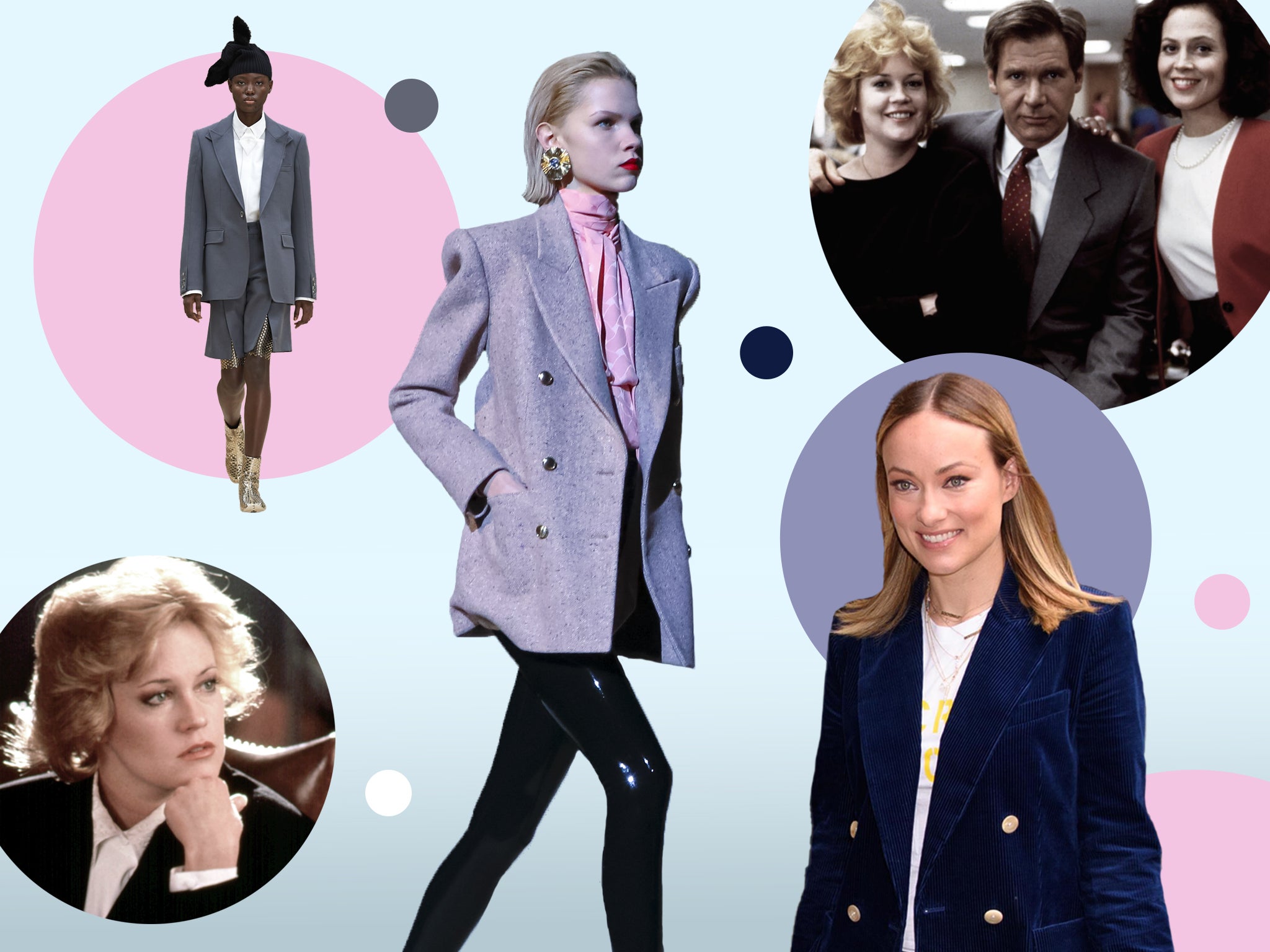The Independent's journalism is supported by our readers. When you purchase through links on our site, we may earn commission.
‘Comfort will be priority’: How the pandemic is set to revolutionise the way we dress for work
As more employees slowly migrate from their living rooms back to the office, Olivia Petter examines how the last 18 months will transform office fashion for good


After what has felt like an eternity, it’s time to get dressed again – and not just for the big shop. Restrictions in England have lifted, the hospitality sector has opened up, and, crucially, people are returning to the office. But what will they be wearing when they do?
We’ve all become accustomed to working on our kitchen tables in little more than a loose-fitting sweatshirt and a pair of tracksuit bottoms – and sometimes we even neglect those. It will inevitably feel rather strange to suddenly slip back into a pencil skirt and blazer after all this time.
There have, of course, been major fashion shifts as a result of the pandemic. The rise of “revenge dressing” has been well-documented, with many people leaning towards their most outrageous and flamboyant ensembles as a way of sticking two sartorial fingers up to coronavirus and all the experiences (and outfits) it has taken from them. But we can’t exactly turn up to work in a neon pink co-ord, or a cut-out mesh mini dress, can we? Equally, though, can we really be bothered to don our best Working Girl look in 2021, shoulder pads and all?
Despite this unprecedented time, the regular codes of professional dressing still largely apply. But that’s not to say change isn’t afoot. Lyst, the fashion shopping platform that analyses global consumer habits, has identified a rise in workwear that would once have been seen as too casual for the office. In its latest quarterly index report, the company noted a rise in casual footwear, with the number one “hottest” product named as none other than a humble pair of Nike Air Force Ones, while the only other item of footwear included in the list was Gucci’s rubber sandals, which, in sense and sensibility, reflects a major pivot from the high heels that might’ve once ruled the workwear roost.
“We also have been noticing an increase in demand for total knit outfits, which reflect the growing demand for comfortable but dressier loungewear pieces,” says Morgane Le Caer, Lyst’s content lead. “Since January, we have seen a rise in searches for knit dresses (+72 per cent), knit co-ords (+33 per cent) and knit vests (+61 per cent), which is expected to continue in the coming months.”
“After a year and a half of working from home, the return to the office is likely to be associated with new, more relaxed dress codes,” adds Le Caer. “We expect to see more oversized silhouettes, casual accessories and rainbow colours taking over our work wardrobes, as well as a rise in high-low styling – a good indication that comfort and practicality are here to stay as the world embraces this new hybrid working format.”
But what exactly does a “hybrid” office look consist of? It could be a case of pairing your comfiest pair of jeans with a bright statement T-shirt, or investing in a billowing floral dress that gives you plenty of room to move, like the Rodarte daisy dress, which was named as Lyst’s 10th hottest product of the quarter. For more affordable options, head to & Other Stories and Rixo.
Emily Gordon-Smith, director of consumer product at trends intelligence company Stylus, suggests looking to the autumn/winter 2021 collections for inspiration. “The catwalks were full of some great workplace-ready takes on loungewear; smart but super-relaxed at the same time, in layers of soft knit and plush wovens and a palette of soothing neutrals,” she said. “So kind of taking our work-from-home wardrobe and elevating it to something office appropriate.”
If suits are required as part of your dress code at work, why not try a more laid-back aesthetic than your previous tight-fitting ensembles? If your budget can stretch to the upper echelons, look no further than Bella Freud (we love her pink suit) and Temperley London, both of whom offer three-piece tailored looks that take their cues from the cool, relaxed fits that were popular in the 1970s. For cheaper alternatives, head to Mango, where their zany printed two-piece is currently on sale.
Unlike many of the shifts that happen in fashion’s ephemeral trend cycle, the move towards more laid-back workwear is not likely to be short-lived. In fact, retail experts say it has been brewing for some time. “Pre-Covid, most people were already relatively relaxed when it came to office wear, but the pandemic experience will certainly make comfort in the workplace even more of a priority,” notes Gordon-Smith. “Not only have we become so used to performing our daily routines in clothes that are comfort-based, we have now placed our personal wellbeing firmly at the centre of priorities. So don’t expect consumers to shift back into buying smart or restrictive apparel and footwear any time soon.”
Francesca Muston, vice president of fashion content at trend forecasting company WGSN agrees that even the most rigid of dress codes have been increasingly relaxed over the years at corporate companies. “There has been a slow and steady decline in formal dressing, or to use fashion terminology, a casualisation of clothing, which has been happening over the course of several years, and the pandemic helped to crystallise it,” she explains.
Designers have taken note of this, too, incorporating consumer habits into the way they create and construct their clothes. “Some of these adjustments are concealed, like in four-way stretch fabrics, elastic panels or sleeves, which allow more movement,” she said. “We’re also tracking comfort detailing being used as a more prominent design feature with shirred panels, soft pleats, and gathers seen on loose-fit blouses and wide-leg trousers. Ultimately all of these shifts are long-lasting because they represent a gradual and sustained change to the way we dress rather than a knee-jerk reaction to the pandemic.”
It’s not just the clothes we wear to work that will change, of course. The way we work will, most likely, be permanently impacted by the pandemic, and that, in turn, will permanently affect how we dress. According to YouGov, one in five people want to work from home permanently post-pandemic, while more than one in three (37 per cent) said that they would like to work from home “some of the time”. All of this is likely to have an impact on our work wardrobes, not least because, if fewer people do start going to the office, it might detract from the sense of occasion that has previously been synonymous with workwear. If there’s no one to dress for...
“With the office itself (both the space and culture) needing to change irreversibly as a result of the pandemic, so too will how we dress for work,” says Gordon-Smith. “Many peoples’ work lives will continue to be lived out partly from home and online, businesses will become more flexible about where and how we interact, and when we are in an office setting much more emphasis will be placed on our personal comfort and wellbeing, which will also play out in how we choose to dress.”
It seems, then, that the way we dress for work moving forward will increasingly depend on our lifestyle and what makes us feel comfortable, both of which are likely to have radically changed after the pandemic. Much like everything else, really.
Join our commenting forum
Join thought-provoking conversations, follow other Independent readers and see their replies
Comments
Bookmark popover
Removed from bookmarks